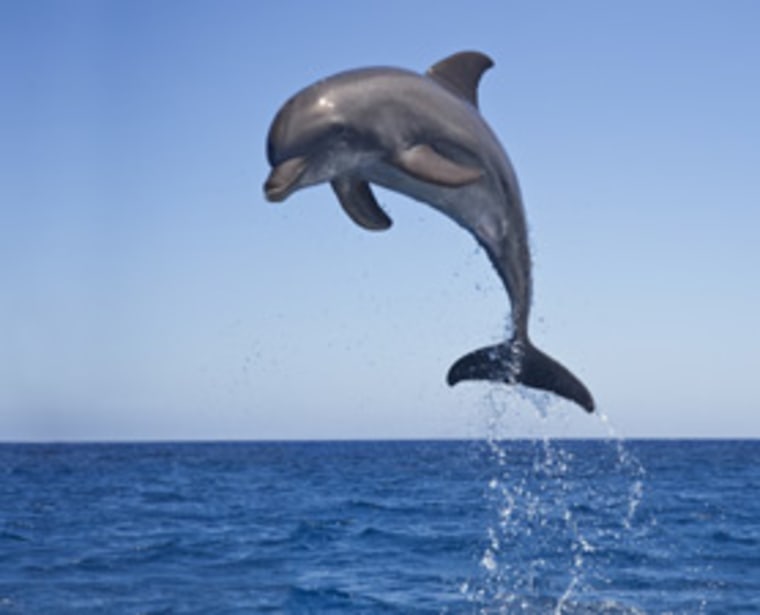Dolphin births have boomed off the Alabama and Mississippi shores since Hurricane Katrina, according to a new survey published in Marine Mammal Science.
Lance Miller, now of the San Diego Zoo's Institute for Conservation Research in Escondido, Calif., was tracking bottlenose dolphin populations in the Mississippi Sound as part of his graduate research at the University of Mississippi.
Then Hurricane Katrina struck in August 2005. "One of the things we immediately noticed was, for obvious reasons, there were a lot less boats," Miller said.
Eighty-seven percent of commercial boats were damaged or destroyed, according to a National Marine Fisheries Service report. Commercial hauls declined by 40-50 percent in 2005 and 2006 compared with 2004.
"We decided to look before and after to see if there were any effects of Hurricane Katrina on dolphins," Miller said.
Miller and his colleagues tracked the number of calves seen per mile traveled by their research vessel, the percentage of calves vs. non-calves and the number of calves per group of dolphins encountered. All three measures showed that more calves had been born since before the hurricane.
There may be several reasons for the increase, the researchers noted.
"Ultimately you have an increase in fish abundance for dolphins to feed on," Miller said, because of the decline in fishing. "You have a reduction in boat traffic both commercial and recreational. And, you also have a potential increase in the number of reproducing females."
The last factor could be a result of heavy losses of dolphin calves during the hurricane.
"When cows lose their calves, they can become fertile between two months to a year afterward," Miller said. So the bump in births could be a baby boom resulting from breeding to replace lost calves.
The researchers are continuing to gather data to determine whether the populations are increasing overall.
"What's great about this study is that it shows us some potential effects of this hurricane, and indirectly, potentially, effects of human disturbance," Miller said. "I think this allows us to look at some more specific questions: How does decreasing commercial fisheries intake affect dolphin populations? How does the number of boats or density of boats affect populations?"
"I thought this was quite interesting and a good use of the data," said Keith Mullin of the National Oceanic and Atmospheric Administration's Southeast Fisheries Science Center in Pascagoula, Miss.
The boost of births may not result in a long-term population boom, he speculated, especially if the increase is due to cows replacing lost calves. And even if it's due to a food boost, it may not last.
"If they got this bump in food and a couple of years later are down to pre-hurricane levels, then that new population level may not be sustainable," Mullin said.
